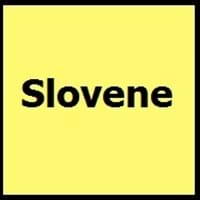Filipino vs Slovene
Countries
Philippines
European Union, Slovenia
National Language
Philippines
Austria, Croatia, Hungary, Italy, Slovenia
Second Language
Philippines
Not spoken in any of the countries
Speaking Continents
Asia
Europe
Minority Language
Not spoken in any of the countries
Austria, Hungary, Italy
Regulated By
Komisyon sa Wikang Filipino
Slovenian Academy of Sciences and Arts
Interesting Facts
- "Filipino" was officially declared as national language by the constitution in 1987.
- "Filipino" is the official name of Tagalog, or synonym of it.
- The Freising Monuments is the oldest preserved records of written Slovene from 10th century.
- The first Slovene book was printed in 1550.
Similar To
Tagalog Language
Serbo-Croatian
Derived From
Spanish Language
Not Available
Alphabets in
Filipino-Alphabets.jpg#200
Slovene-Alphabets.jpg#200
Writing Direction
Not Available
Left-To-Right, Horizontal
How Are You?
Kumusta
Kako se imate?
Good Night
magandang gabi
Lahko noč
Good Evening
Magandang gabi
Dober večer
Good Afternoon
Magandang hapon
Dober dan
Good Morning
Magandang umaga
Dobro jutro
Sorry
pinagsisisihan
Oprostite
I Love You
Mahal kita
Ljubim te
Excuse Me
patawarin ninyo ako
Oprostite
Dialect 1
Bikol
Prekmurje Slovene
Where They Speak
Philippines
Hungary, Slovenia
How Many People Speak
Not Available
Dialect 2
Hiligaynon
Resian
Where They Speak
Philippines
Italy
How Many People Speak
Not Available
Where They Speak
Philippines
Slovenia
How Many People Speak
Not Available
Speaking Population
Not Available
Not Available
Second Language Speakers
Not Available
Native Name
filipino
Not available
Alternative Names
Pilipino
Slovenian, Slovenscina
French Name
filipino; pilipino
slovène
German Name
Pilipino
Slowenisch
Pronunciation
[ˌfɪl.ɪˈpiː.no]
[slɔˈʋèːnski ˈjɛ̀ːzik], [slɔˈʋèːnʃt͡ʃina]
Ethnicity
Not Available
Slovenes
Origin
16th Century
972-1093
Language Family
Austronesian Family
Indo-European Family
Subgroup
Not Available
Not Available
Branch
Not Available
Not Available
Early Forms
No early forms
No early forms
Standard Forms
Filipino
Slovene
Signed Forms
Not Available
Not Available
Scope
Individual
Individual
ISO 639 1
No Data Available
sl
ISO 639 6
Not Available
Not Available
Glottocode
fili1244
slov1268
Linguasphere
No Data Available
53-AAA-f
Language Type
Living
Living
Language Linguistic Typology
Not Available
Not Available
Language Morphological Typology
Not Available
Fusional
Filipino and Slovene Language History
Comparison of Filipino vs Slovene language history gives us differences between origin of Filipino and Slovene language. History of Filipino language states that this language originated in 16th Century whereas history of Slovene language states that this language originated in 972-1093. Family of the language also forms a part of history of that language. More on language families of these languages can be found out on Filipino and Slovene Language History.
Filipino and Slovene Greetings
People around the world use different languages to interact with each other. Even if we cannot communicate fluently in any language, it will always be beneficial to know about some of the common greetings or phrases from that language. This is where Filipino and Slovene greetings helps you to understand basic phrases in Filipino and Slovene language. Filipino word for "Hello" is Kumusta or Slovene word for "Thank You" is Hvala. Find more of such common Filipino Greetings and Slovene Greetings. These greetings will help you to be more confident when conversing with natives that speak these languages.
Filipino vs Slovene Difficulty
The Filipino vs Slovene difficulty level basically depends on the number of Filipino Alphabets and Slovene Alphabets. Also the number of vowels and consonants in the language plays an important role in deciding the difficulty level of that language. The important points to be considered when we compare Filipino and Slovene are the origin, speaking countries, language family, different greetings, speaking population of these languages. Want to know in Filipino and Slovene, which language is harder to learn? Time required to learn Filipino is 44 weeks while to learn Slovene time required is 44 weeks.





